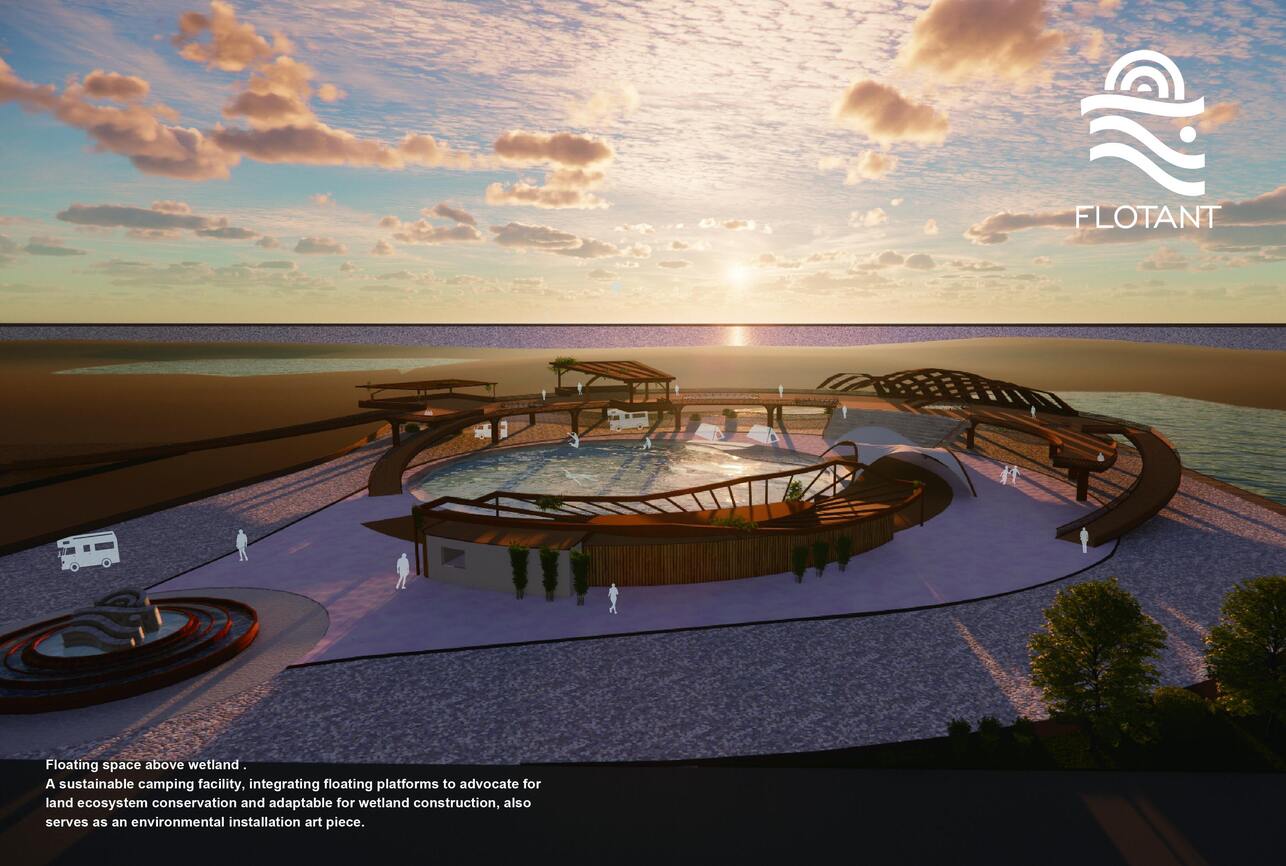
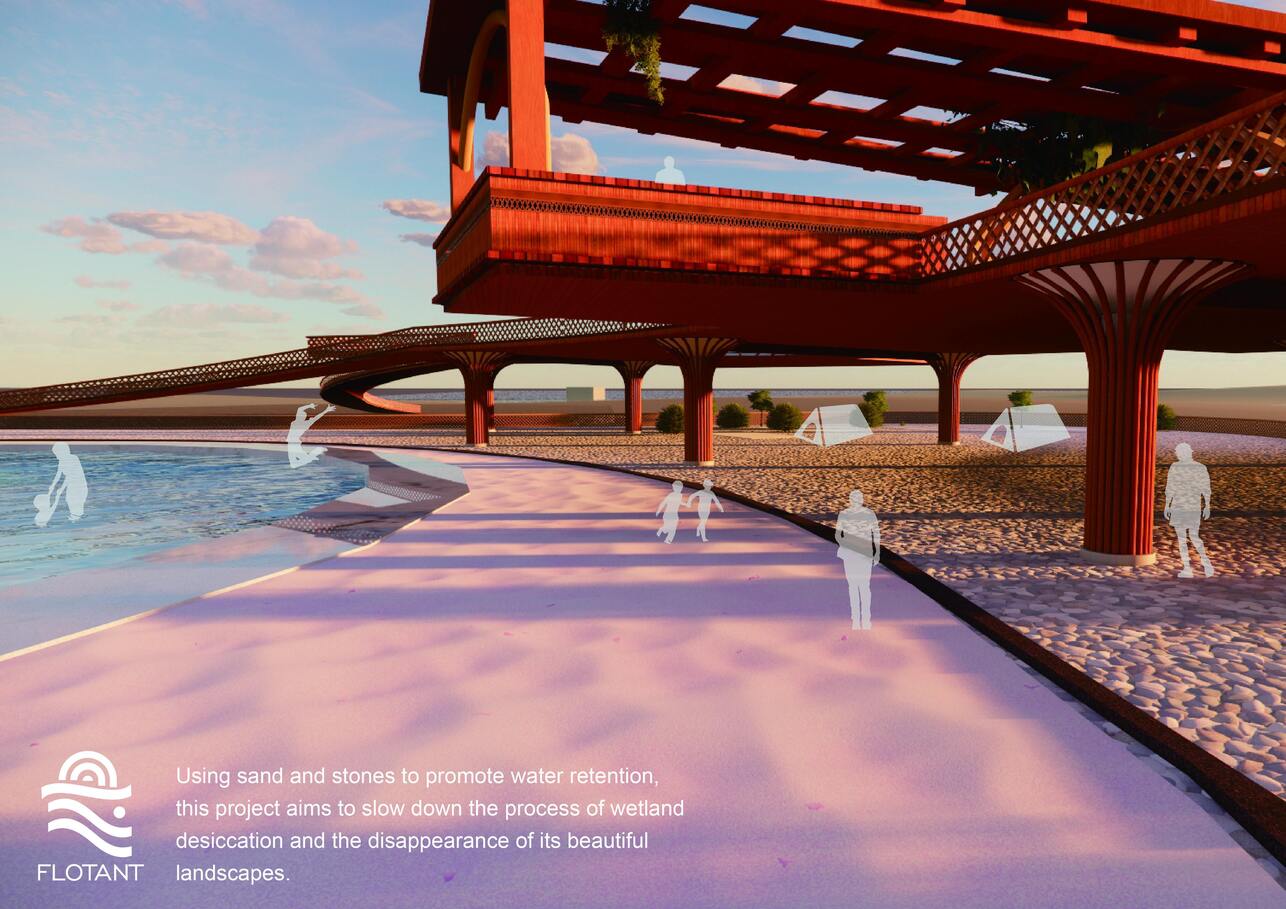
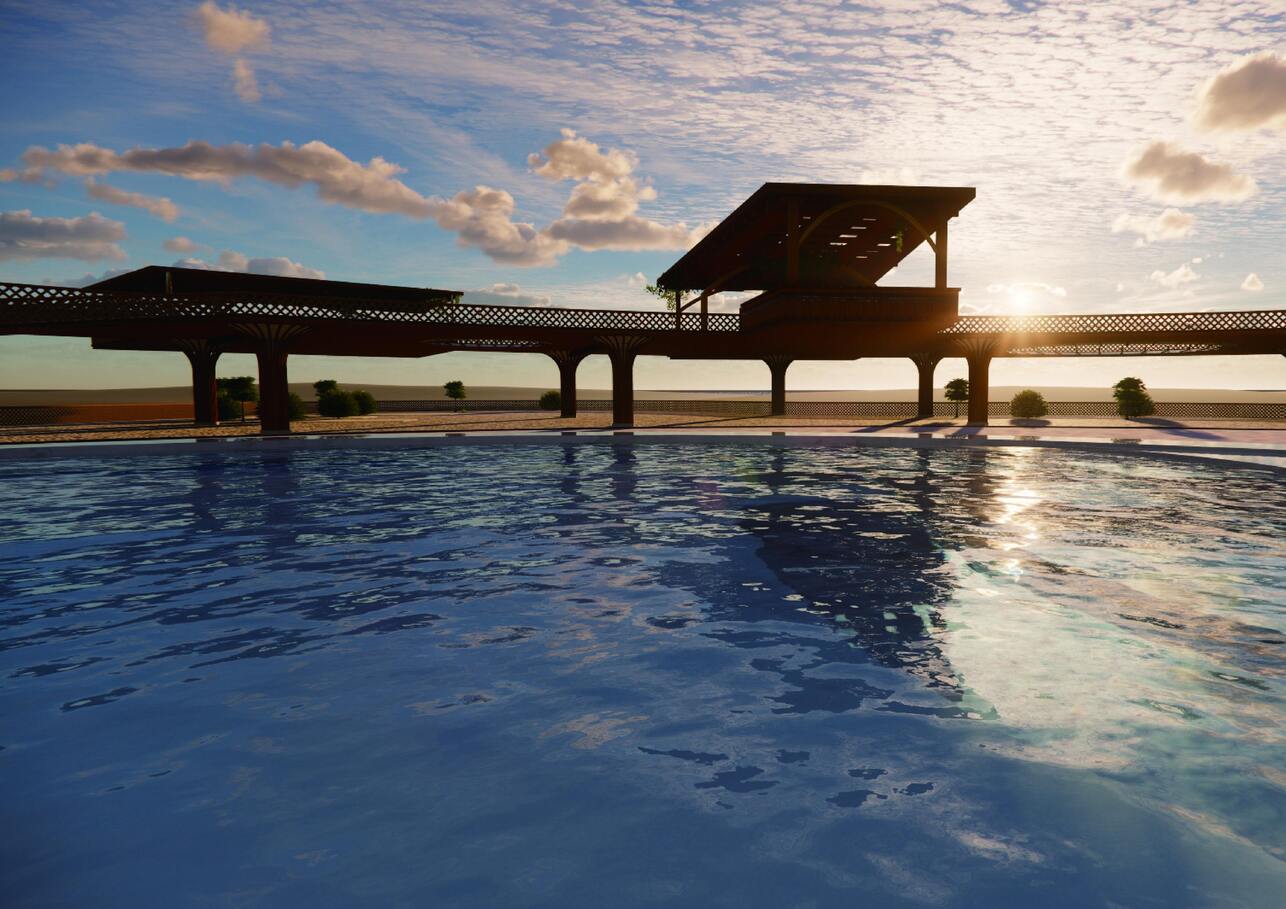
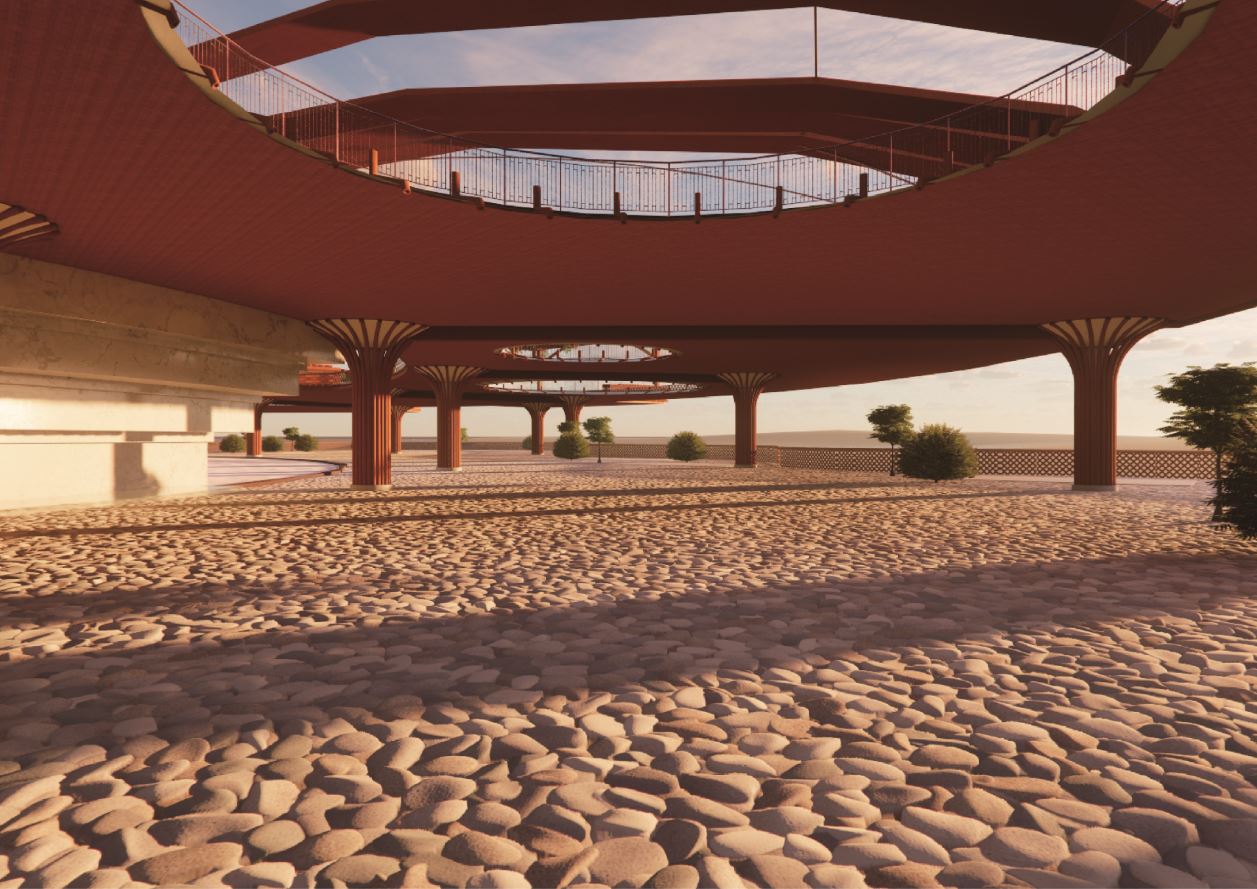
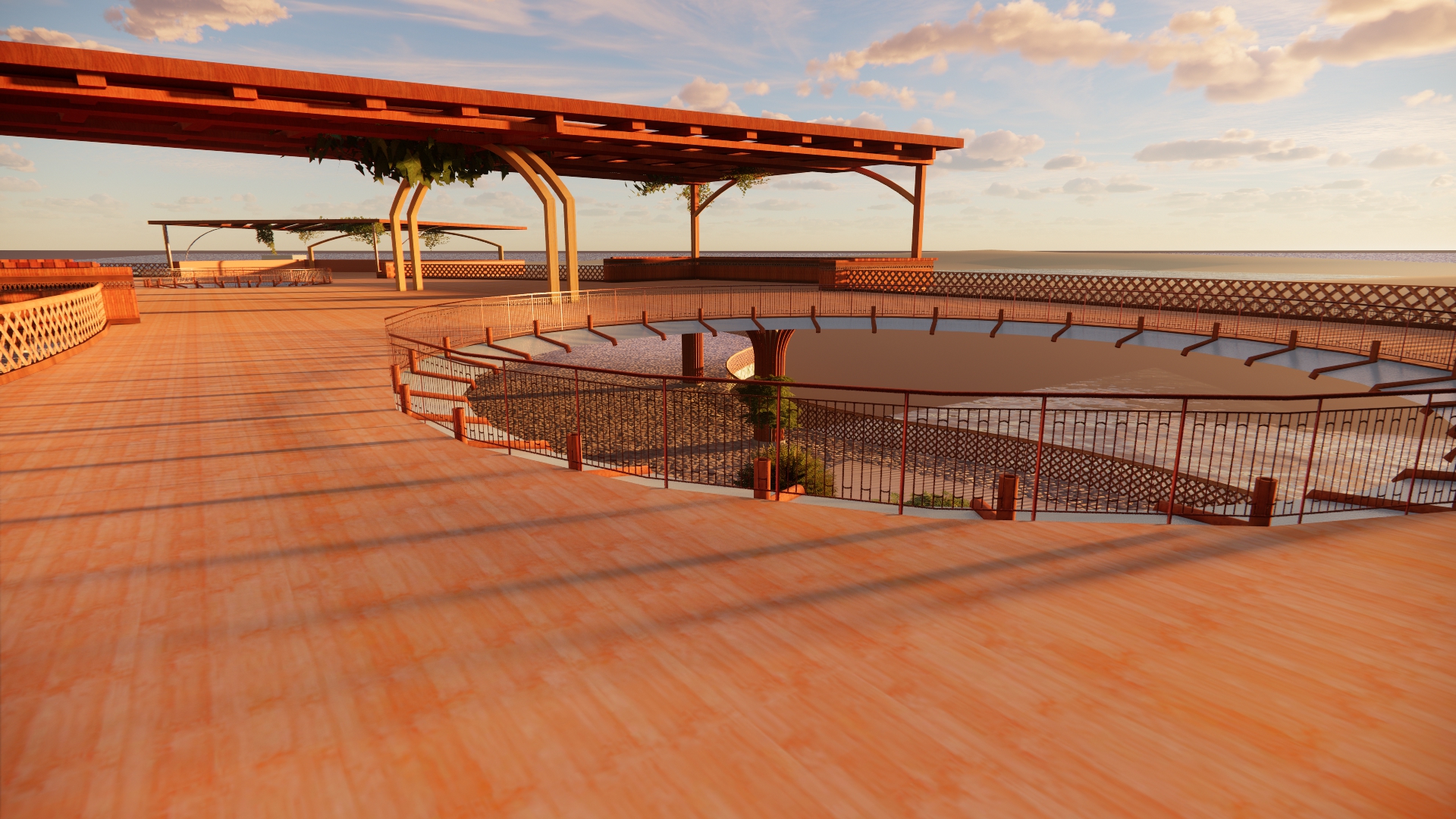
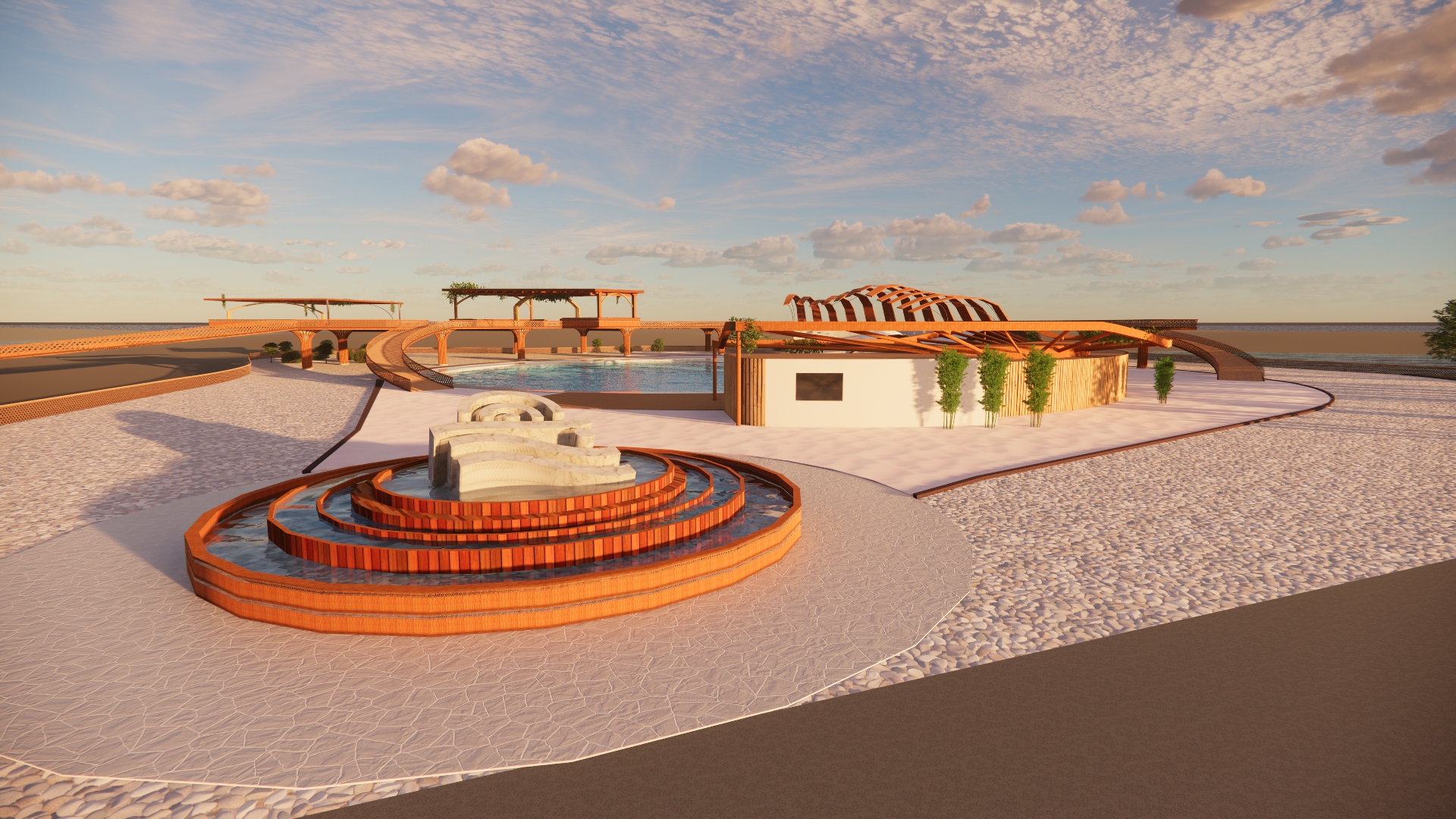
重新改造高美濕地廢棄的海水浴場。為解決過多遊客踐踏原濕地範圍造成生物環境死亡之情形,使用漂浮平台的概念來保育生態且適合於溼地建造的大型永續露營園區兼環保警示的裝置藝術,同時亦是親子共樂,欣賞美景的場域。建材採用竹材為主體,因高美濕地中,高美一詞原意為被淹沒的竹竿;同時因竹材屬東南亞沿海一帶常見的建材之一,且具有輕質耐重防潮耐水的低碳排環保建材,適合取代傳統高碳排量的鋼筋混凝土材料鋼筋。輔助建材採用沙、石促進基地保水,減緩濕地陸化、美景消逝的進程。利用導引當地海水的漲退及柱體收集雨水的方式,將水引入園區內的造浪池及該基地用水處;造浪池深度配合潮汐,表達時間的流逝與循環,希望喚起民眾的環保意識也提醒高美濕地屬於即將消逝的夕陽景觀並復刻當年海水浴場的榮景。另外亦可解決木棧道附近沒有遊客服務中心、沒有周邊導覽地圖且指標不足及公廁不足等造成遊客縮減的問題。
We are revitalizing the abandoned seaside resort in Gaomei Wetlands. To address the problem of excessive visitor traffic damaging the wetland ecosystem, we propose a concept of floating platforms to conserve the environment. These platforms will serve as large-scale sustainable camping sites and environmental art installations, also providing educational opportunities for families to enjoy the scenery together. Bamboo is chosen as the primary building material, fittingly representing Gaomei, which translates to "submerged bamboo poles." Bamboo is lightweight, durable, moisture-resistant, and environmentally friendly, making it a suitable alternative to high-carbon concrete. Additionally, sand and stones will be used to retain water, slowing down wetland desiccation and preserving the beauty of the landscape. By utilizing local seawater fluctuations and collecting rainwater, we aim to create wave pools and water features within the park, symbolizing the passage of time and encouraging environmental awareness. This initiative also aims to revive the former glory of the seaside resort while addressing issues such as the lack of visitor centers, inadequate signage, and insufficient restroom facilities near the wooden boardwalk, which have contributed to a decrease in visitor numbers.